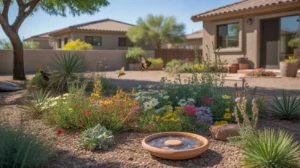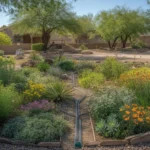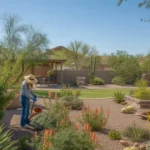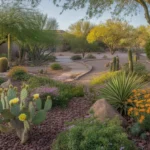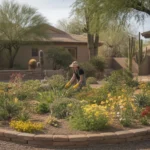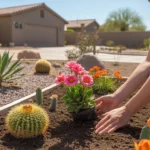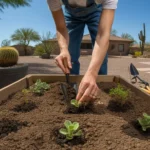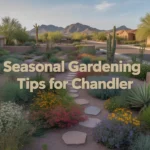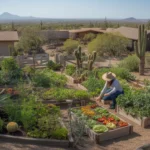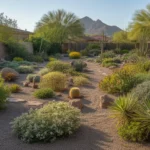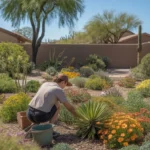Transforming your Gilbert yard into a vibrant pollinator paradise is easier than you might think. By providing the right mix of native flowers, shrubs, and trees, you can attract beautiful butterflies, busy bees, and zippy hummingbirds while supporting the local ecosystem. Use this handy checklist to plan and plant your very own pollinator oasis right here in the Valley of the Sun.
Choose a Sunny Spot
Most flowering plants that attract pollinators thrive in full sun. Scout your yard for an area that gets at least 6 hours of direct sunlight per day. Avoid shady spots under trees or on the north side of your house, as these won’t provide enough light for pollinator plants to bloom abundantly.
If your yard is mostly shaded, consider planting in containers or raised beds that you can move into the sunniest spots. Butterflies and other pollinators are most active during the day, so having your flowers in bright sunshine will make them easier for these helpful critters to find.
Opt for Native Plants
When selecting plants for your Gilbert pollinator garden, prioritize species that are native to the Sonoran Desert. These hardy plants have evolved to thrive in our intense heat and sporadic rainfall. Not only will they be easier to care for, but the local pollinators will recognize them as valuable food sources.
Some top native plant picks for pollinators include:
- Desert marigold
- Chuparosa
- Fairy duster
- Penstemons
- Blackfoot daisy
- Goodding’s verbena
- Parry’s penstemon
By focusing on native species, you’ll create a low-maintenance pollinator buffet that’s perfectly in sync with Gilbert’s climate and natural ecosystem. As an added bonus, you’ll likely use less water than you would with thirsty non-native ornamentals.
Include a Variety of Shapes and Colors
Different pollinators are attracted to different types of flowers. Hummingbirds use their long beaks to sip nectar from tubular blooms, while butterflies prefer flat landing pads. Bees go for flowers they can easily crawl inside to access pollen.
To attract the widest variety of pollinators, choose plants with an assortment of flower shapes and colors. Hummingbirds love the tubular red flowers of chuparosa and desert honeysuckle. Butterflies flock to the flat yellow flowers of brittlebush and desert marigold. Bees adore the blue spikes of mealy cup sage and the purple pom-poms of prairie clover.
By diversifying your plant palette, you’ll not only create visual interest for human visitors but also roll out the welcome mat for every pollinator on the block. A colorful variety is key to a buzzing, fluttering garden.
Plan for Continuous Blooms
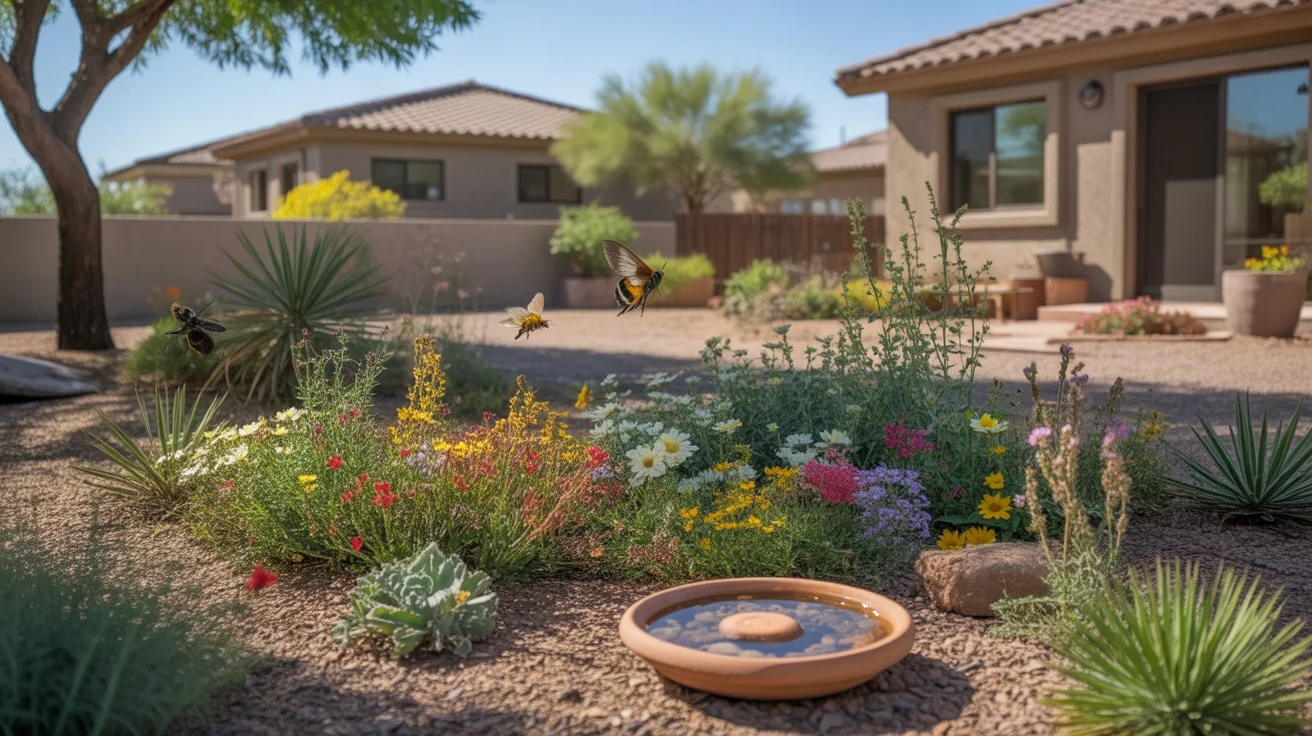
Pollinators need nectar and pollen sources from early spring through late fall. When designing your Gilbert pollinator garden, choose a mix of plants that bloom at different times so there’s always something in flower for your tiny winged guests.
In spring, penstemon, desert marigold, and blackfoot daisy kick off the season. Summer brings fairy duster, chuparosa, and desert willow blossoms. In autumn, Goodding’s verbena, sky flower, and canyon sunflower take the stage. By overlapping bloom times, you’ll keep the pollinator party going for three full seasons.
It’s okay if your garden has a lull during the coldest winter months. Many pollinators migrate or hibernate during this time. The occasional mild winter may coax a few flowers from Valentine bush or desert lavender to tide the pollinators over until spring returns in earnest.
Add a Shallow Water Source
Pollinators get thirsty work done in the Gilbert heat. Include a shallow water source where bees, butterflies, and other insects can sip safely. A shallow birdbath or even a plant saucer filled with pebbles and water will do the trick.
Place your pollinator watering hole in a shady spot so the water doesn’t evaporate too quickly in summer. Refill it regularly, and give it a good scrub now and then to prevent algae build-up or mosquito breeding.
While hummingbirds won’t use this ground-level water source, they’ll appreciate a few nectar feeders placed around the garden. Look for easy-to-clean models with perches and fill them with a solution of four parts water to one part plain white sugar.
Provide Shelter for Pollinators
Your pollinator garden should offer more than just food and water. Many pollinators also need places to lay eggs, pupate, or overwinter. Leaving some natural litter like fallen leaves, hollow stems, and bare patches of soil will give them cozy spots to nest.
If you’re feeling crafty, you can also provide human-made habitats like bee hotels made from bundled hollow reeds or paper tubes. Butterfly houses offer shelter for species that overwinter as adults. Placing these near nectar-rich flowers will attract pollinators and encourage them to stick around.
Of course, pollinator habitats can be as simple as an out-of-the-way corner of the yard left undisturbed. Resist the urge to over-tidy—your pollinator friends will thank you.
Avoid Pesticides
Pesticides are kryptonite for pollinators. Many common insecticides and herbicides can harm or kill bees, butterflies, and other beneficial insects. If you must manage a serious pest infestation, opt for the most selective, least-toxic option available and apply it with caution.
In most cases, a healthy pollinator garden won’t need chemical intervention. Planting a variety of natives helps balance the insect population naturally. Tolerate a few nibbled leaves here and there—chances are the “pest” in question is actually a pollinator larva gearing up to metamorphose into a beautiful butterfly or moth.
If weeds pop up, pull them by hand or smother them with mulch rather than spraying. A thick layer of organic mulch will minimize weeds while also conserving soil moisture for your pollinator plants.
Spread the Word
Share your pollinator garden success with friends and neighbors to inspire them to plant for pollinators too. Pollinators don’t recognize property lines, so the more pollinator-friendly yards there are around Gilbert, the better these vital species will fare.
Consider registering your yard as an official Monarch Waystation with MonarchWatch.org or certifying it as a Wildlife Habitat with the National Wildlife Federation. You’ll get a sign to display in your garden and the satisfaction of knowing you’re part of a broader effort to support pollinators across the continent.
By using this checklist to plant the right mix of native flowers, trees, and shrubs, provide water and shelter, and avoid pesticides, you’ll soon have a vibrant pollinator paradise humming and fluttering with life. Your Gilbert yard will be the neighborhood hot spot for butterflies, bees, and hummingbirds—and you’ll get a front-row seat to the colorful show.

